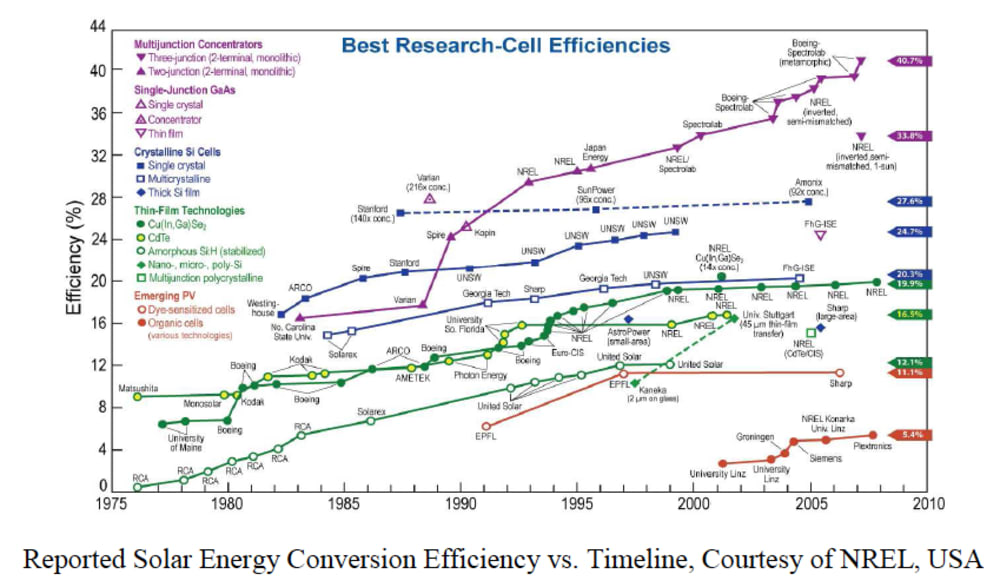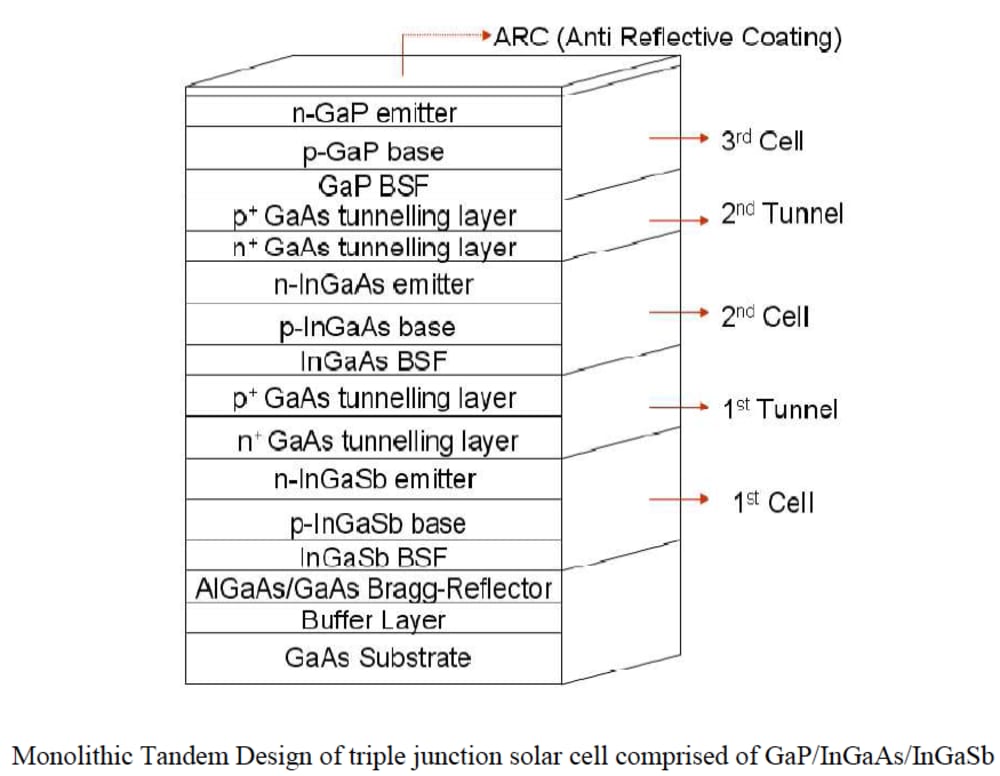Sunlight is the most abundant renewable energy resource with
an intensity of approximately 1kW/m² and over 1.5×10²²J
(15,000 Exajoules) impinging earth’s surface everyday. This
enormous energy is 11,538 times greater than the daily
consumption of 1.3EJ of the world. Earth's ultimate recoverable oil resource is 3 trillion barrels, containing 1.7×10²²J of energy, which Sun delivers to our planet in 1.5 days. The main challenge in the Photovoltaic industry is making the solar cells more cost effective. The solar cell generated electricity capital cost of ~$1/kWh in USA, Europe and developed countries is still unfavorable to ~10-15¢/kWh of grid electricity. Single junction solar cells can only absorb a certain wavelength of the solar spectrum, hence produce less efficiency. In contrary multijunction solar cells direct sunlight towards matched spectral sensitivity by splitting the spectrum into smaller slices. The high efficiency multijunction PV made up of III-V semiconductor material alloys with high optical sensitivity and ideal combination of band-gaps increase absorption of photons,creates more electron-hole pairs promoting higher efficiency of the solar cell. National Renewable Energy Laboratory (NREL), US Department of Energy (DOE) and many leading research organizations all over the world are investing money in the design of III-IV multijunction solar cell projects. Bright light provides irradiance of 1kW/m². Of this energy 527 Watts is infrared (IR) radiation, 445 Watts visible light and 32 Watts UV radiation. I have designed two novel multijunction solar cells made up of InP/InGaAs/InGaSb and GaP/InGaAs/InGaSb materials having a promise of executing more than 42% efficiency in contrary to normal solar cells having efficiency of 8%-15%. InGaSb material will help absorption of light in the wavelength of 598 nm and beyond in the solar spectrum and also in the infrared region unlike the state of art solar cells. The solar cell design consists of 3 cell layers and 2 tunnel junctions (for better electrical and optical contact) in between. The top cell (cell facing the sun) has the highest bandgap energy and the bottom cell has the lowest bandgap energy. Top cell absorbs all the photons at and above its band-gap energy and transmits the less energetic photons to the cell below. The middle cell absorbs all the transmitted photons with energies equal or greater than their band-gap energy and transmits the rest downward in the stack. It is possible to absorb photons of different energies and for a wide range of wavelength in the solar spectrum making the multijunction solar cells achieve very high efficiency. I have favorably compared the photon absorption efficiencies of my solar cell designs with state of art solar cells executing the novelty of the design. We have applied for a patent for the solar cell designs and contacted a multinational solar cell company to build the prototype. I am hopeful that this very high efficiency solar cell will make the solar cells more cost effective reducing the area and amount of material needed to achieve same amount of power and more affordable to use for stand-alone and grid-connected applications.
Like this entry?
-
About the Entrant
- Name:Indranil Bhattacharya
- Type of entry:individual
- Patent status:pending





